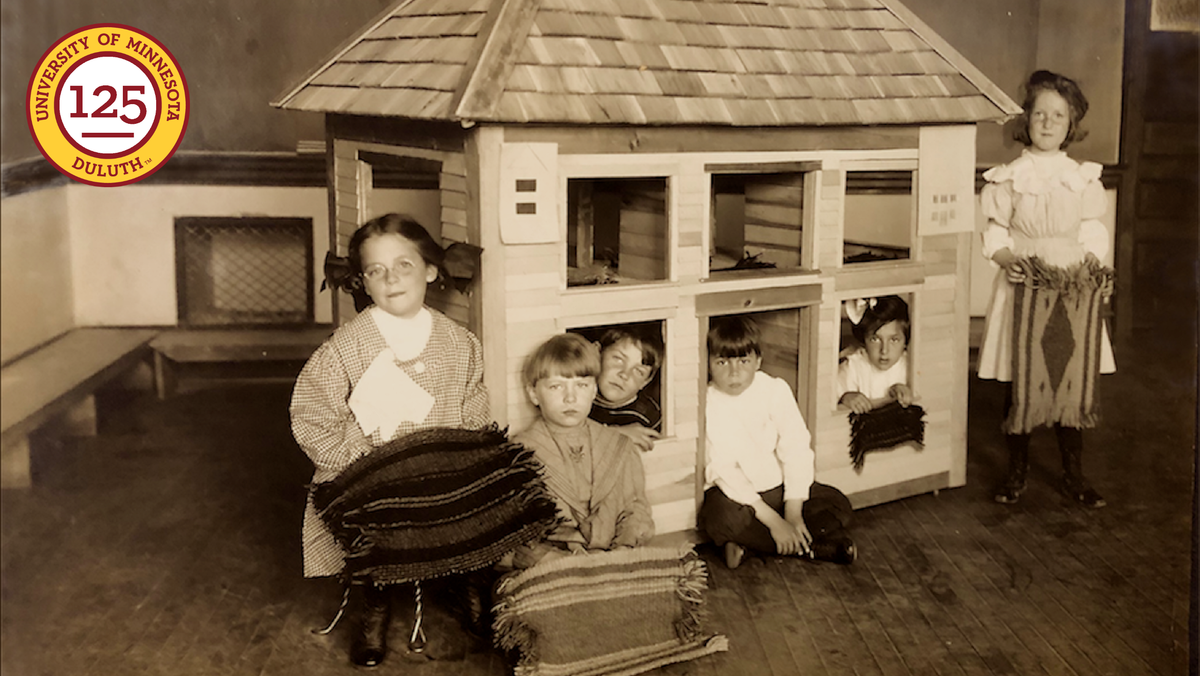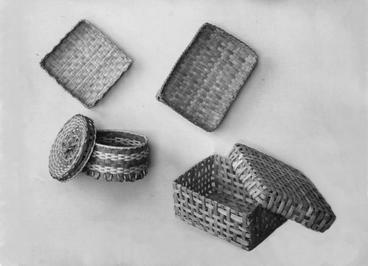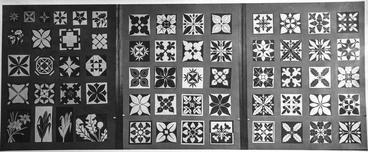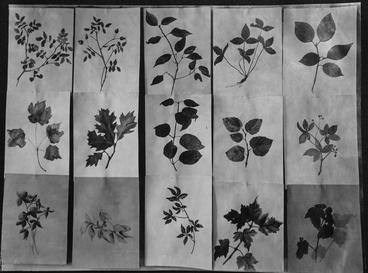In Duluth, the normal school student teachers taught children to work with wood, metal, leather, and raffia (grasses). A June 9, 1907 Duluth News Tribune article detailed the work to be displayed at an Arts and Crafts public exhibit in Duluth. The writer says, “Every piece of work done… is a piece of genuine expression on the part of the pupil.”
The article goes on to praise the teacher of the student teachers, “Miss Hellman Bainbridge has... most progressive theories as to its application... Her work has proven... the practicability of her ideas and the wonderful possibilities of industrial work." The enthusiastic writer continues, "Every girl... has gone out... with new ideas of beauty, [and] new standards for household decoration and adornment."
The reader is reminded that only women were taught at the Normal School. “The girls are going to teach in the schools of the state, to form and reform the taste of the coming generation...[and] in the final reckoning, they will be the makers of homes…”
There’s a jab at old fashioned, Victorian style as the writer continues, [The girls will be] “the principal factors in the elimination of ornate furniture, daring pictures and gilded gewgaws that make the average American home a thing of ugliness and useless expenditures.” The newspaper article doesn’t mention where in Duluth the 1907 Arts and Crafts Exhibit was held, but it does mention other participants. “There will be loan exhibits from other cities of various kinds of artistic handiwork and lectures by such well-known authorities as Forrest Emerson Mann of the Grand Rapids School of Applied Arts and George Weitbrecht of the Mechanics Arts High School of St. Paul.”In fact, George Weitbrecht was well-known for his respected school. It was was the first high school in the Upper Midwest to combine manual training with traditional academic curricula.
In addition to tile work and weaving, the newspaper writer was impressed by the playhouse (pictured above), the work of the first and second grades under the charge of student teacher Miss Florence Ely. “These children... made a plan for the play house, drawing an excellent design... and using definite measurements for doors and windows."
The article goes on to compliment, "rooms furnished with most ingenious furniture... and pretty rugs on the floor," all made by the children.
Today’s readers are sure to agree with this writer from a century ago. The Duluth Normal School did some very impressive work, beginning in its earliest years.
___
A scrapbook containing an original copy of the June 9, 1907 Duluth News Tribune article is housed in the Duluth Public Library. The two-page article details the exhibit, along with a few original photographs, The photos above of the playhouse, the artwork, and the Duluth Normal School in 1907 are included in the scrapbook. A transcript of the article and copies of the photographs are located in the Archives and Special Collections, Kathryn A. Martin Library, University of Minnesota Duluth.
___
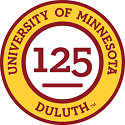
SEE MORE
